Datsun GO T(O) CVT [2019-2020]
Rate & Win
Datsun GO T(O) CVT [2019-2020] Summary
Datsun GO T(O) CVT [2019-2020] is the top model in the GO lineup and the price of GO top model is Rs. 6.18 Lakh. It gives a mileage of 19.59 kmpl. Datsun GO T(O) CVT [2019-2020] is available in Automatic (CVT) transmission and offered in 6 colours: Vivid Blue, Bronze Grey, Ruby Red, Blade Silver, Amber Orange and Opal White.
Read More
Datsun GO T(O) CVT [2019-2020] Review
We get behind the wheel of the Datsun GO and GO+ CVT. First in the segment!
What are they?
How are they on the inside?
How do they drive?
Should I buy them?
Where do they fit in?
GO T(O) CVT [2019-2020] Specifications & Features
- Specifications
- Features
- Specifications
- Features
Specifications
Engine & Transmission
Engine1198 cc, 3 Cylinders Inline, 4 Valves/Cylinder, DOHCEngine TypeHR12 DE EngineFuel TypePetrolMax Power (bhp@rpm)76 bhp @ 6000 rpmMax Torque (Nm@rpm)104 Nm @ 4400 rpmMileage (ARAI)19.59 kmplDrivetrainFWDTransmissionAutomatic (CVT) - 5 GearsEmission StandardBS 4Valve/Cylinder (Configuration)4, DOHCDimensions & Weight
Length3788 mmWidth1636 mmHeight1507 mmWheelbase2450 mmGround Clearance180 mmKerb Weight913 kgCapacity
Suspensions, Brakes, Steering & Tyres
Features
Exterior
Braking & Traction
Safety
Comfort & Convenience
Lighting
Locks & Security
Doors, Windows, Mirrors & Wipers
Entertainment, Information & Communication
Mobile App Features
Storage
Airbags
Seats & Upholstery
Instrumentation
Manufacturer Warranty
Other GO Variants
| Variants | Price | Specifications | |
|---|---|---|---|
Rs. 6.18 Lakh | 5 Person, FWD, 104 Nm, 180 mm, 913 kg, 265 litres, 5 Gears, HR12 DE Engine, No, 35 litres, No, No, No, 3788 mm, 1636 mm, 1507 mm, 2450 mm, 104 Nm @ 4400 rpm, 76 bhp @ 6000 rpm, Keyless, Yes (Manual), Front & Rear, 1, No, Yes, Yes, 0, No, No, No, 2 Airbags (Driver, Passenger), Yes, 0, BS 4, 5 Doors, 19.59 kmpl, Petrol, Automatic (CVT), 76 bhp | Get Offers from Dealers |
GO Alternatives
Explore Used Datsun Go
GO T(O) CVT [2019-2020] Colours
The following 6 colors are available in GO T(O) CVT [2019-2020].
Vivid Blue
Write a detailed review and you can win Amazon voucher worth Rs. 2,000
GO T(O) CVT [2019-2020] FAQs
Q: What is the price of GO T(O) CVT [2019-2020]?
GO T(O) CVT [2019-2020] price is Rs. 6.18 Lakh.
Q: How is the performance of GO T(O) CVT [2019-2020]?
T(O) CVT [2019-2020] is powered by a 1198 cc Petrol engine mated to a 5 Gears speed Automatic (CVT) gearbox which generates 76 bhp of power & 104 Nm of torque.
Q: What is the mileage of GO T(O) CVT [2019-2020]?
The GO T(O) CVT [2019-2020] mileage is 19.59 kmpl.
Q: What is the standard tyre size and ground clearance for the GO T(O) CVT [2019-2020]?
The standard tyre size for the GO T(O) CVT [2019-2020] is 165 / 70 R14, and the ground clearance is 180 mm.
Q: What is the fuel tank capacity of GO T(O) CVT [2019-2020]?
The fuel tank capacity of GO T(O) CVT [2019-2020] is 35 litres.
Q: How much bootspace does GO offer?
Datsun GO boot space is 265 litres.
- Home
- Datsun Cars
- GO
- T(O) CVT [2019-2020]

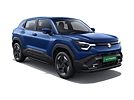
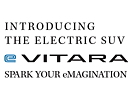

![Datsun GO T(O) CVT [2019-2020] Datsun GO T(O) CVT [2019-2020]](https://imgd.aeplcdn.com/664x374/cw/ec/36449/Datsun-Go-Exterior-138944.jpg?wm=0&q=80)
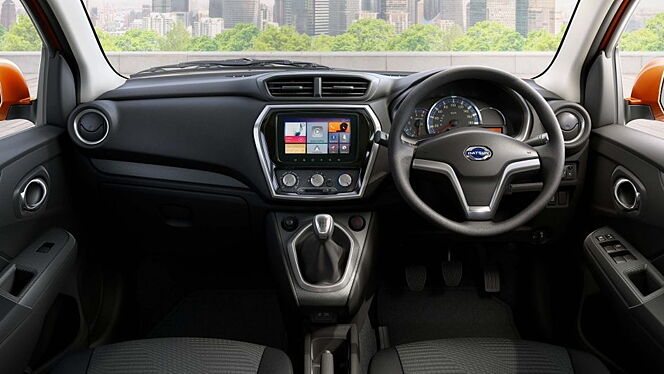
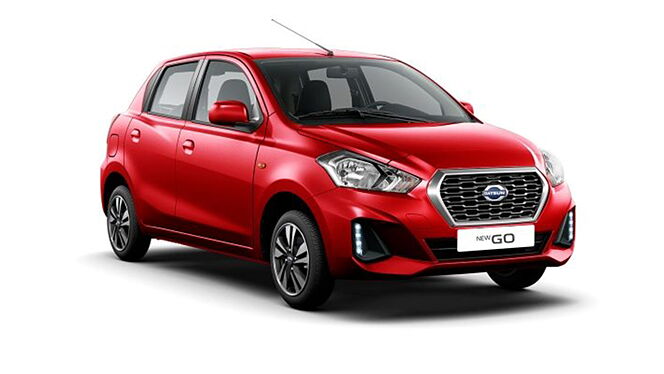
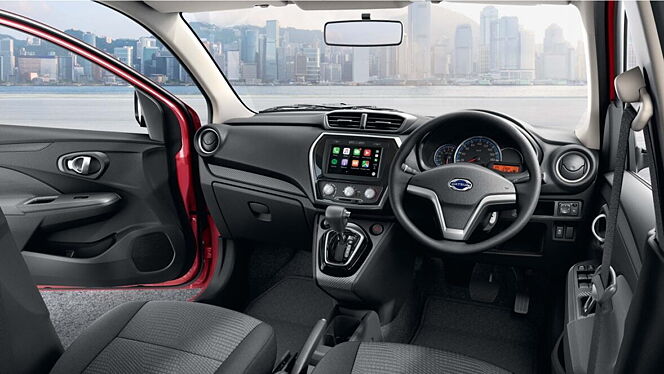
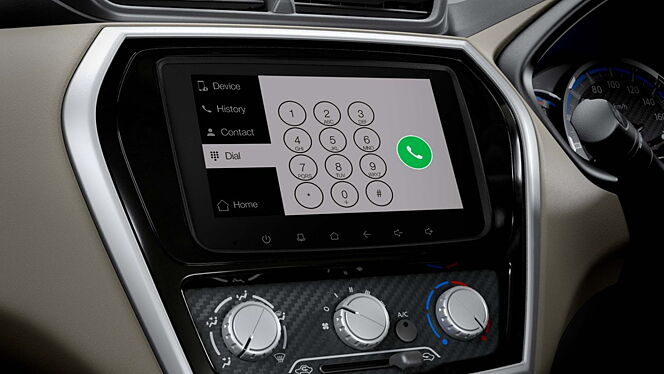
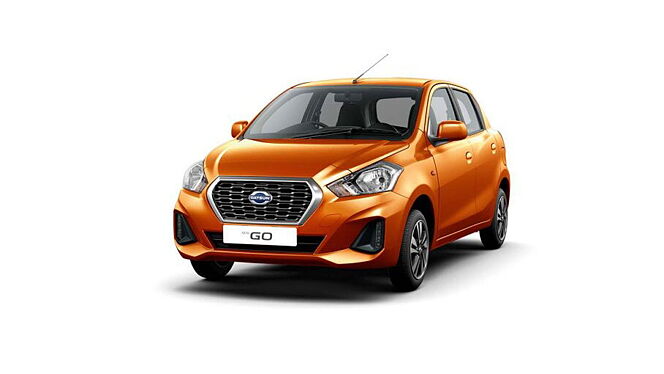
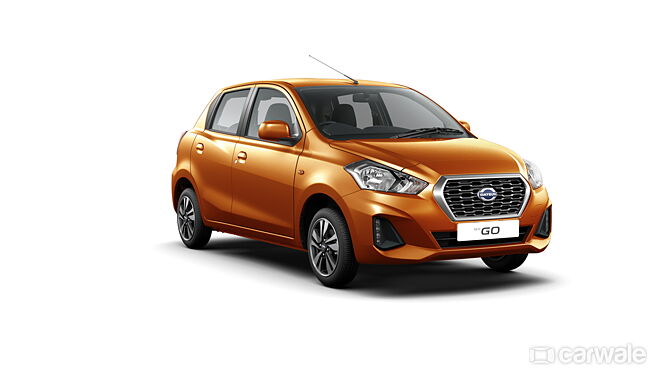



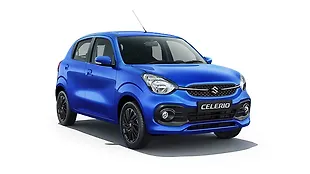
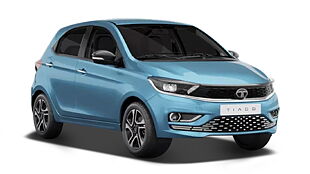


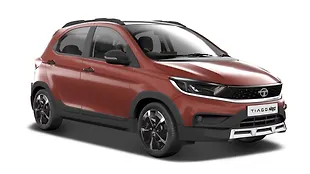
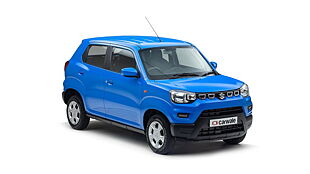

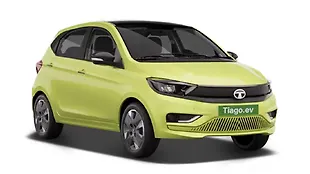
![Second hand Datsun GO T [2018-2019] Second hand Datsun GO T [2018-2019]](https://imgd.aeplcdn.com/310x174/vimages/202411/3715670_119951_1_1732370174945.jpg?q=80)
![Second hand Datsun GO T [2018-2019] Second hand Datsun GO T [2018-2019]](https://imgd.aeplcdn.com/310x174/vimages/202501/3788094_119943_1_1736511123591.jpg?q=80)
![Second hand Datsun GO T [2018-2019] Second hand Datsun GO T [2018-2019]](https://imgd.aeplcdn.com/310x174/vimages/202411/3706002_138029_1_1731845102025.jpg?q=80)

![Second hand Datsun GO T [2018-2019] Second hand Datsun GO T [2018-2019]](https://imgd.aeplcdn.com/310x174/vimages/202501/3786391_150913_1_1736447705990.jpg?q=80)
![Second hand Datsun GO T [2018-2019] Second hand Datsun GO T [2018-2019]](https://imgd.aeplcdn.com/310x174/vimages/202501/3786370_150913_1_1736447527554.jpg?q=80)


![Second hand Datsun GO T [2018-2019] Second hand Datsun GO T [2018-2019]](https://imgd.aeplcdn.com/310x174/cw/ucp/stockApiImg/QWR8M80_n4fjv5dh_1_49866007.jpg?q=80)
